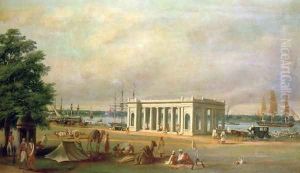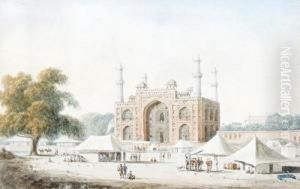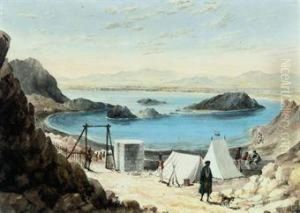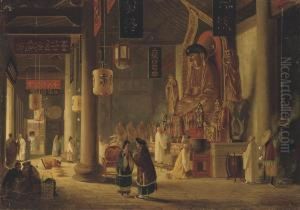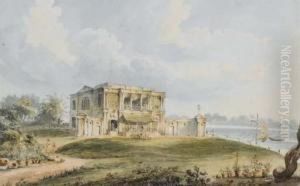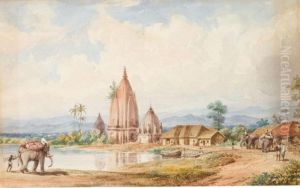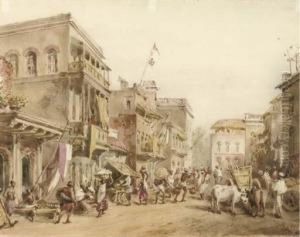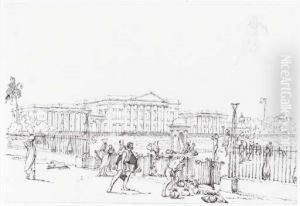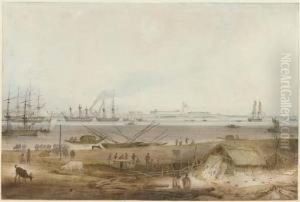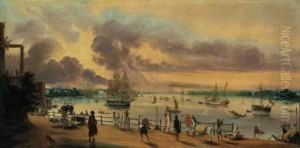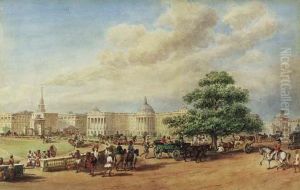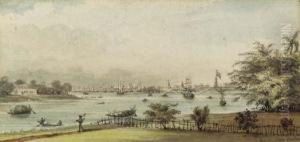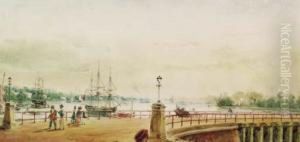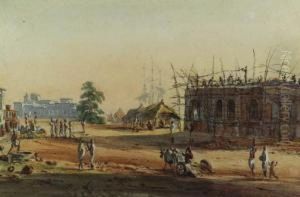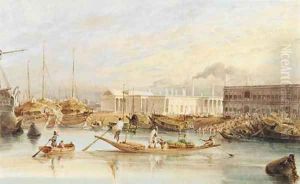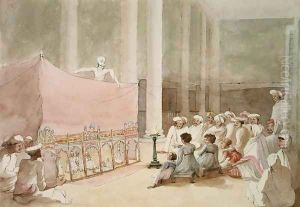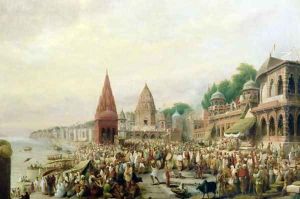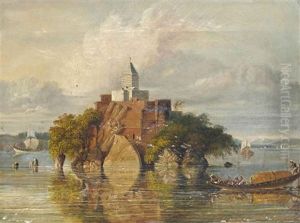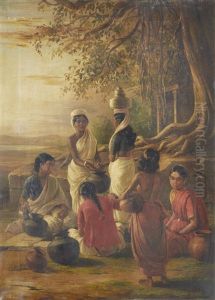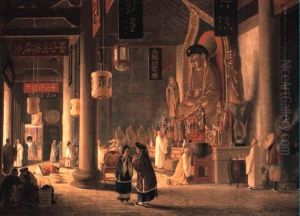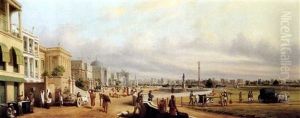William Prinsep Paintings
William Prinsep was an English artist, known primarily for his career in India where he worked for the East India Company. Born in 1794, Prinsep came from a notable family with strong connections to India. His father, John Prinsep, had substantial business interests in Bengal, and his brother, James Prinsep, was an eminent orientalist and numismatist who became well known for deciphering the Kharosthi and Brahmi scripts of ancient Indian inscriptions.
William Prinsep's time in India was during a period of significant British influence and expansion in the region. He arrived in Calcutta (now Kolkata) in 1813 and joined the East India Company. Over his career, he held various positions, including those in the commercial and marine services. Prinsep's work with the company allowed him to travel extensively throughout India, which greatly influenced his artistic pursuits.
Though not as famous as his brother James in scholarly circles, William Prinsep left a mark through his artistic endeavors. He was an amateur artist and a member of the Asiatic Society of Bengal. His artworks consisted primarily of sketches and watercolors depicting landscapes, architectural views, and scenes of Indian life, providing a visual record of the environment and culture during the British Raj.
Prinsep's works were created during a time when there was a keen interest in the exotic and picturesque aspects of British colonies. They capture the essence of colonial India from the perspective of a British resident and officer. His drawings and paintings were appreciated for their historical value, even if they did not achieve the critical acclaim of the era's major artists.
After retiring from the East India Company, Prinsep returned to England where he continued to engage with the arts. He passed away in 1874, leaving behind a legacy that offers insights into the British colonial experience in India. His work is part of the collections of various institutions and continues to be studied for its historical and artistic significance within the context of the British Empire's interactions with India.
